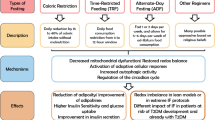Abstract
Human obesity has been associated with a dysregulation of the peripheral and adipose tissue (AT) endocannabinoid system (ES). The aim of this study was to elucidate the acute in vivo effects of insulin on gene expression of the cannabinoid type 1 (CB-1) and type 2 (CB-2) receptors, as well as of the fatty acid amide hydrolase (FAAH) in the sc abdominal adipose tissue (SCAAT). Nine lean (L) and 9 obese (OB), but otherwise healthy males were studied in the fasting state and during a euglycemic hyperinsulinemic clamp (40 mU/m2*min−1). SCAAT biopsies were obtained at baseline and after 270 min of iv maintained hyperinsulinemia. The basal SCAAT gene expression pattern revealed an upregulation of the FAAH in the OB (p=0.03 vs L), whereas similar CB-1 and CB-2 mRNA levels were seen. Following hyperinsulinemia, the FAAH mRNA levels significantly increased 2-fold in the L (p=0.01 vs baseline) but not in the OB. In contrast, insulin failed to significantly change both the adipose CB-1 and CB-2 gene expression. Finally, the FAAH gene expression positively correlated with the fasting serum insulin concentration (r 0.66; p = 0.01), whereas an inverse association with the whole-body glucose disposal (r −0.58; p<0.05) was seen. Taken together, these first time observations demonstrate that the ES-related genes in the SCAAT differentially respond to hyperinsulinemia in lean/insulin-sensitive and in obese/insulin-resistant individuals. We suggest that insulin may play a key role in the obesity-linked dysregulation of the adipose ES at the gene level.
Similar content being viewed by others
References
Cota D, Marsicano G, Tschöp M, et al. The endogenous cannabinoid system affects energy balance via central orexigenic drive and peripheral lipogenesis. J Clin Invest 2003, 112: 423–43.
Pagotto U, Marsicano G, Cota D, Lutz B, Pasquali R. The emerging role of the endocannabinoid system in endocrine regulation and energy balance. Endocr Rev 2006, 27: 73–100.
Engeli S, Bohnke J, Feldpausch M, et al. Activation of peripheral endocannabinoid system in human obesity. Diabetes 2005, 54: 2838–43.
Blüher M, Engeli S, Klöting N, et al. Dysregulation of the peripheral and adipose tissue endocannabinoid system in human abdominal obesity. Diabetes 2006, 55: 3053–60.
Bensaid M, Gary-Bobo A, Esclangon A, et al. The Cannabinoid CBI receptor antagonist SRI4I7I6 increases Acrp30 mRNA expression in adipose tissue of obese fa/fa rats and in cultured adipocyte cells. Mol Pharmacol 2003, 63: 908–14.
Bouaboula M, Hilairet S, Marchand J, Fajas L, Le Fur G, Casellas P. Anandamide induced PPARγ transcriptional activation and 3T3-LI preadipocyte differentiation. Eur J Pharmacol 2005, 517: 174–181.
Roche R, Hoareau L, Bes-Houtmann S, et al. Presence of the cannabinoid receptors, CB1 and CB2, in human omental and subcutaneous adipocytes. Histochem Cell Biol 2006, 126: 177–87.
Spoto B, Fezza F, Parlongo G, et al. Human adipose tissue binds and metabolizes the endocannabinoids anandamide and 2-ara-chidonoylglycerol. Biochimie 2006, 88: 1889–97.
Löfgren P, Sjölin E, Wahlen K, Hoffstedt J. Human adipose tissue cannabinoid receptor I gene expression is not related to fat cell function or adiponectin level. J Clin Endocrinol Metab 2007, 92: 1555–9.
Côté M, Matias I, Lemieux I, et al. Circulating endocannabinoid, abdominal adiposity and related cardiometabolic risk factors in obese men. Int J Obes (Lond) 2007, 31: 692–9.
Matias I, Di Marzo V. Endocannabinoids and the control of energy balance. Trends Endocrinol Metab 2006, 18: 27–37.
Ferrannini E, Natali A, Bell P, Cavallo-Perin P, Lalic N, Mingrone G. Insulin resistance and hypersecretion in obesity. J Clin Invest 1997, 100: 1166–73.
Kahn BB, Flier JS. Obesity and insulin resistance. J Clin Invest 2000, 106: 473–81.
Smith U, Gogg S, Johansson A, Olausson T, Rotter V, Svalstedt B. Thiazolidinediones (PPARy agonists) but not PPARa agonists increase IRS-2 gene expression in 3T3-L1 and human adipocytes. FASEB J 2001, 15: 215–20.
Kempf K, Rose B, Herder C, et al. The metabolic syndrome sensitizes leukocytes for glucose-induced immune gene expression. J Mol Med 2007, 85: 389–96.
De Fronzo R, Tobin JB, Anders R. Glucose clamp technique: a method for quantifying insulin secretion and resistance. Am J Physiol 1979, 237: E2I4–23.
Smith U. Impaired (‚diabetic‘) insulin signaling and action occur in fat cells long before glucose intolerance. Is insulin resistance initiated in the adipose tissue? Int J Obes Relat Metab Disord 2002, 26: 897–904.
Giorgino F, Laviola L, Eriksson JW. Regional differences of insulin action in adipose tissue: insights from in vivo and in vitro studies. Acta Physiol Scand 2005, 183: 13–30.
Poirier B, Bidouard JP, Cadrouvele C, et al. The anti-obesity effect of rimonabant is associated with an improved serum lipid profile. Diabetes Obes Metab 2005, 7: 65–72.
Author information
Authors and Affiliations
Corresponding author
Additional information
These authors equally contributed to this work
Rights and permissions
About this article
Cite this article
Murdolo, G., Kempf, K., Hammarstedt, A. et al. Insulin differentially modulates the peripheral endocannabinoid system in human subcutaneous abdominal adipose tissue from lean and obese individuals. J Endocrinol Invest 30, RC17–RC21 (2007). https://doi.org/10.1007/BF03347440
Accepted:
Published:
Issue Date:
DOI: https://doi.org/10.1007/BF03347440




